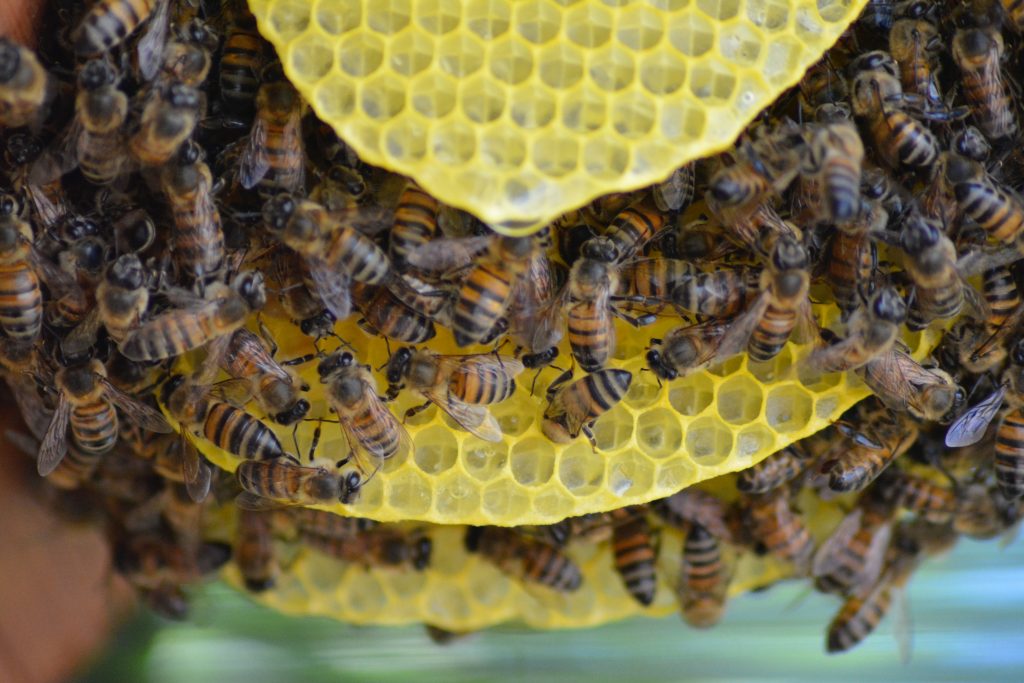In the apiary year May is the month which can be one of the most demanding for the bee keeper. We have to consider
- the risk of the bees swarming,
- the problems of oil seed rape honey,
- the threat from the Asian Hornet.

Swarming
When looking in the hive one of the things we are looking for is to see whether the colony is preparing to swarm. You do not want your colony to swarm - it is the apiary equivalent of half of Santa's elves leaving the week before Christmas!
Swarming is a natural event. It is the way that bees move from one area to another. In many cases it is how we obtain fresh colonies- it is just that we do not want it to be our bees that are moving on.
The bees can decide to swarm based on a variety of factors many of which we do not know. If we knew all of them we would act to remove those factors and we would never again lose a swarm.
One of the factors that can encourage a swarm is a lack of space in the hive. If when you do the inspection the bees have populated 75% of the available space - either as brood and stores or just stores - then it is time to add another super.
On your inspection look for queen cups or play cells. You may even see maturing queen cells in the hive with larvae and royal jelly. If you see these then it is time to consider an artificial swarm or a shook swarm.
Oil seed rape
Honey from oil seed rape is another factor to consider at this time of the year. Rape honey sets very firmly and can be very difficult to remove from the frames. Be alert to the risk - did you see any bright yellow fields of oil seed rape within harvesting distance of your hives? If you did then you may find that the bees are filling supers very quickly and as fast as they fill them you should be removing them and extracting the honey before it sets solid.
Asian Hornet
The other risk at this time of year - as it is right through to the autumn is hawking by Asian Hornets. This year we seem to be under less of a threat than previous years. There is a lot less tourist traffic from the continent so the chances of an Asian Hornet stowing away in a caravan or wrapped up in someone's tent is a lot less and a report from Jersey suggests fewer sightings this year.
However we do have two additional problems in that bee keepers are not able to get out as much to interact with the public and warn them of the dangers and the public are not getting out as much to be able to see the Asian Hornet. Who knows what is going on in the more isolated parts of the New Forest?

